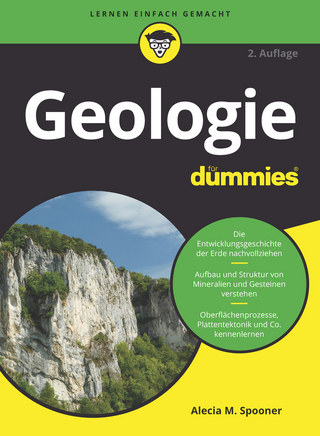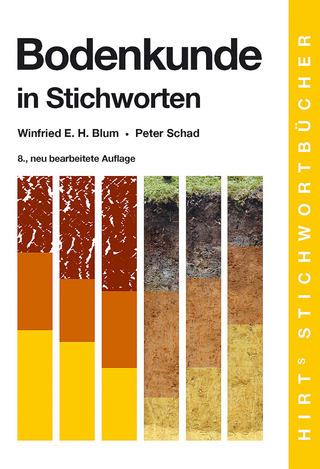
The Soils of Oregon
Springer International Publishing (Verlag)
978-3-030-90093-9 (ISBN)
This book is the only comprehensive summary of natural resources of Oregon and adds to World Soil Book Series state-level collection. Due to broad latitudinal and elevation differences, Oregon has an exceptionally diverse climate, which exerts a major influence on soil formation. The mean annual temperature in Oregon ranges from 0°C in the Wallowa and Blue Mountains of northeastern Oregon to 13 °C in south-central Oregon. The mean annual precipitation ranges from 175 mm in southeastern Oregon to over 5,000 mm at higher elevations in the Coast Range. The dominant vegetation type in Oregon is temperate shrublands, followed by forests dominated by lodgepole pine, Douglas-fir, and mixed conifers, grasslands, subalpine forests, maritime Sitka spruce-western hemlock forests, and ponderosa pine-dominated forests.
Oregon is divided into 17 Major Land Resource Areas, the largest of which include the Malheur High Plateau, the Cascade Mountains, the Blue Mountain Foothills, and Blue Mountains. The single most important geologic event in Oregon was the deposition of Mazama ash 7,700 years by the explosion of Mt. Mazama. Oregon has soil series representative of 10 orders, 40 suborders, 114 great groups, 389 subgroups, over 1,000 families, and over 1,700 soil series. Mollisols are the dominant order in Oregon, followed by Aridisols, Inceptisols, Andisols, Ultisols, and Alfisols. Soils in Oregon are used primarily for forest products, livestock grazing, agricultural crops, and wildlife management. Key land use issues in Oregon are climate change; wetland loss; flooding; landslides; volcanoes, earthquakes, and tsunamis; coastal erosion; and wildfires.
Thor Thorson was the USDA Oregon Natural Resources Conservation Service (NRCS) State Soil Scientist from 2012 to 2015. He is a native of Wisconsin and attended the University of Wisconsin-Madison, graduating with a Bachelor's degree in Soil Science in 1974. In 1974 he began his career with USDA as a field Soil Scientist in California. He worked on four California soil surveys prior to transferring to Oregon in 1980 as the Oregon State Soil Correlator. From 1983 to 2012 he held positions as Oregon Assistant State Soil Scientist and as a Regional Soil Data Quality Specialist covering parts of Oregon, Idaho and Washington. He retired in 2015 from government service and resides in the Portland, Oregon area. He enjoys golfing, hunting and fishing and continues to provide soil expertise to the Oregon NRCS as a volunteer.
Chad McGrath received his B.S. degree in Forest Resource Management from the University of Idaho in 1966. He then served as an officer in the U.S. Navy. In 1975, he received his M.S. degree in Forest Soils from the University of Idaho. He worked as a Soil Scientist for the Idaho Soil Conservation Commission from 1975 to 1976. In 1976, he was hired as a Soil Scientist by the Soil Conservation Service: 1976-1977 Power County Area, Idaho; 1977-1978 Oneida County Area, Idaho; 1978-1983 Soil Survey Project Leader for four surveys in southeastern Idaho; completed Soil Survey Reports for two of those surveys; 1983-1987 Area Soil Scientist for Southeastern Idaho; 1987-1995 Soil Correlator for Idaho. In 1985 he moved to Portland, Oregon as State Soil Scientist and Leader for MLRA Regional Office One which covered parts of Oregon, Idaho, and most of Washington. As State Soil Scientist he provided leadership for the soil survey program in Oregon. MLRA Regional Office provided technical assistance and guidance for all aspects the soil surveys within the area of responsibility. In 2012, he retired from the Natural Resources Conservation Service.
Dean Moberg joined the USDA-Natural Resources Conservation Service (NRCS) in 1984 and worked for NRCS in Oregon, Wisconsin, and Michigan. His final position was to serve as the Basin Resource Conservationist in northwest Oregon. Prior to NRCS, Dean taught high school and worked on vegetable farms, dairy farms, and a maple syrup operation. He obtained his B.S. in Plant Science from the University of California, Davis, a M.A. in Teaching from Cornell University, and a Ph.D. in Environmental Science and Engineering from Oregon Health & Sciences University. Dean and his wife Sara have two daughters. His hobbies include fly fishing, scuba diving, skiing, and gardening.
Matthew Fillmore attended Oregon State University (OSU) in Corvallis where he received B.S. degrees in Soil Science and Wildlife Science in 1976. He began his more than 37-year career with USDA Soil Conservation Service in Oregon as a field Soil Scientist in 1977 working in Linn County. In 1983 he was transferred to Baker County in northeastern Oregon. In 1987 he was promoted to Soil Survey Project Leader for the Curry County survey project in southwestern Oregon. In 1994 he moved back to Corvallis and was stationed in the Soil Science Department at OSU to begin the initial MLRA-based update for Oregon in Benton County under the newly named USDA Natural Resources Conservation Service. In 2008 he became the initial MLRA Soils Office Leader for all of western Oregon based in Salem. He mapped over 1 million acres throughout Oregon and authored three soil survey manuscripts (Curry, Benton and Tillamook counties) during his career. He retired in 2013 from government service and lives in Lebanon, Oregon. He enjoys woodworking, baseball and softball, fishing, traveling and photography in retirement.
Steven Campbell obtained B.S. degree in Forest Management from Washington State University in 1976. He has been a soil scientist with
Introduction.- History of Soil Studies.- Soil-Forming Factor.- Elevation Gradients in the Oregon Mountain Ranges.- General Soil Regions of Oregon.- Diagnostic Horizons and Taxonomic Structure of Oregon Soils.- Taxonomic Soil Regions.- Mollisols.- Inceptisols.- Aridisols.- Andisols.- Ultisols.- Alfisols.- Entisols, Vertisols, Spodosols, and Histosols.- Soil-Forming Processes.- Benchmark, Endemic, Rare, and Endangered Soils.- Land Use in Oregon.- Yields, Soil Conservation, and Production System.- Summary.
| Erscheinungsdatum | 09.04.2023 |
|---|---|
| Reihe/Serie | World Soils Book Series |
| Zusatzinfo | XIX, 545 p. 229 illus., 197 illus. in color. |
| Verlagsort | Cham |
| Sprache | englisch |
| Maße | 210 x 279 mm |
| Gewicht | 1383 g |
| Themenwelt | Naturwissenschaften ► Geowissenschaften ► Geologie |
| Weitere Fachgebiete ► Land- / Forstwirtschaft / Fischerei | |
| Schlagworte | land use • Oregon • Soil Classification • Soil Formation • Soil Geography |
| ISBN-10 | 3-030-90093-2 / 3030900932 |
| ISBN-13 | 978-3-030-90093-9 / 9783030900939 |
| Zustand | Neuware |
| Informationen gemäß Produktsicherheitsverordnung (GPSR) | |
| Haben Sie eine Frage zum Produkt? |
aus dem Bereich


